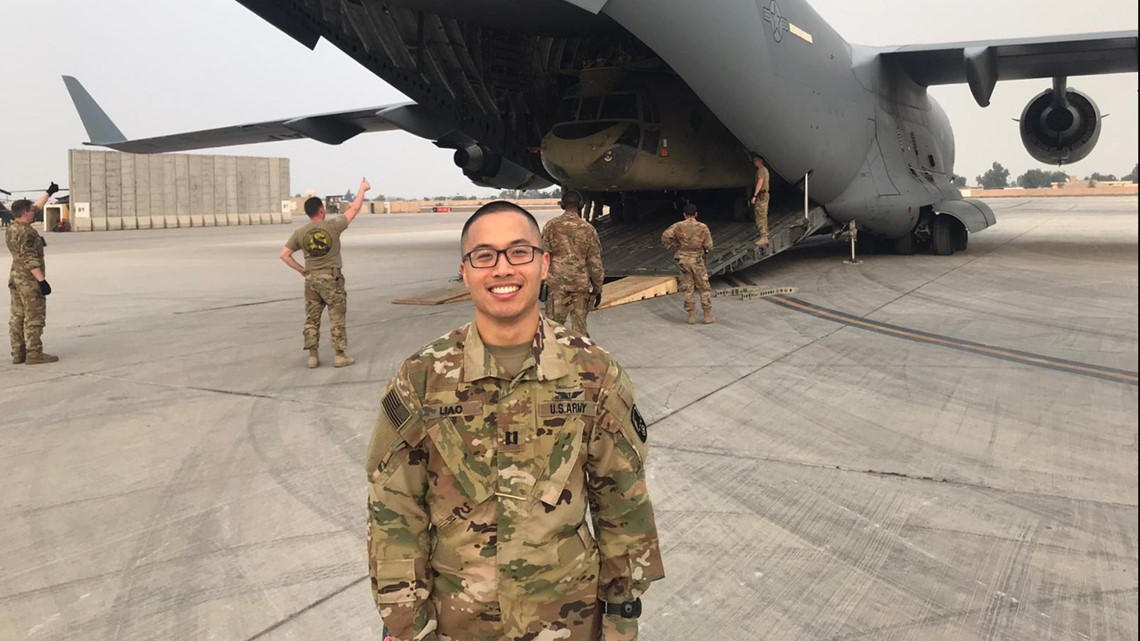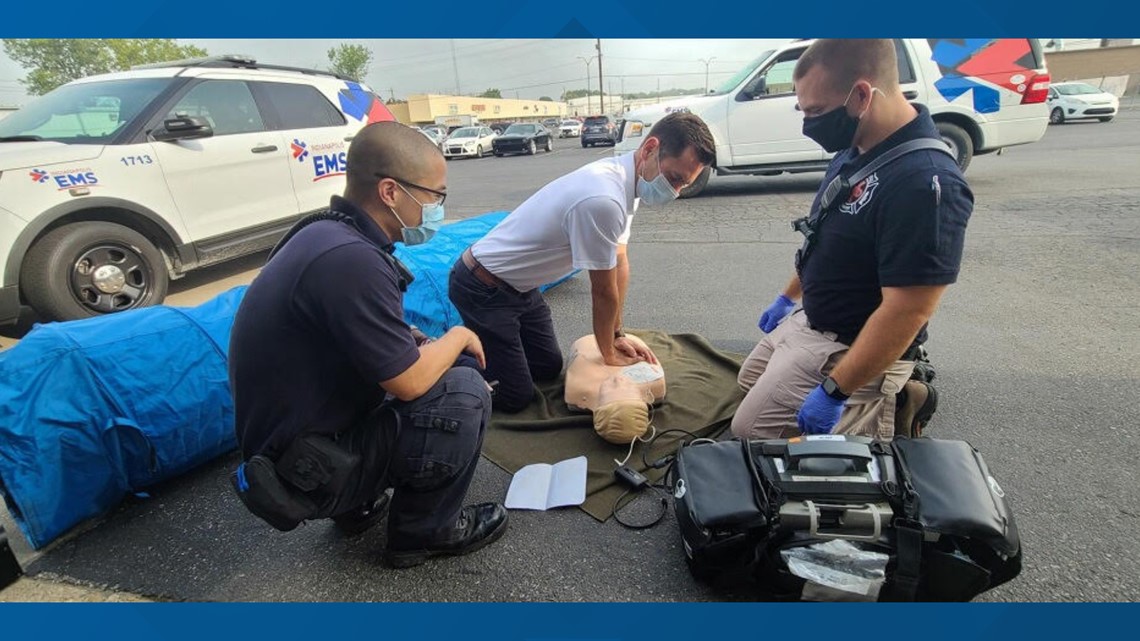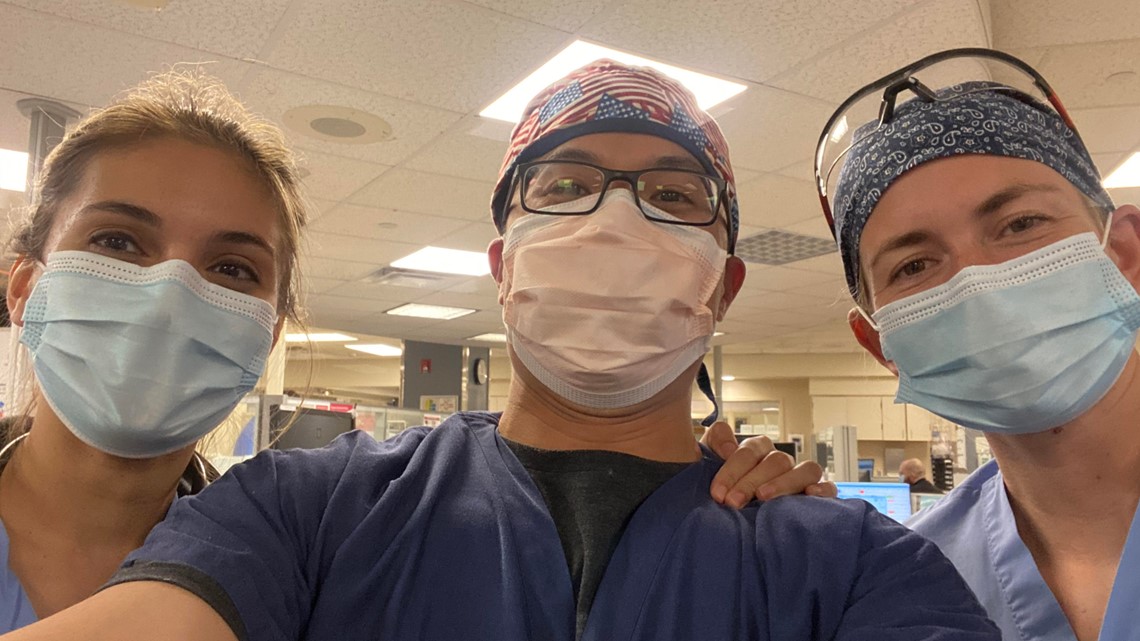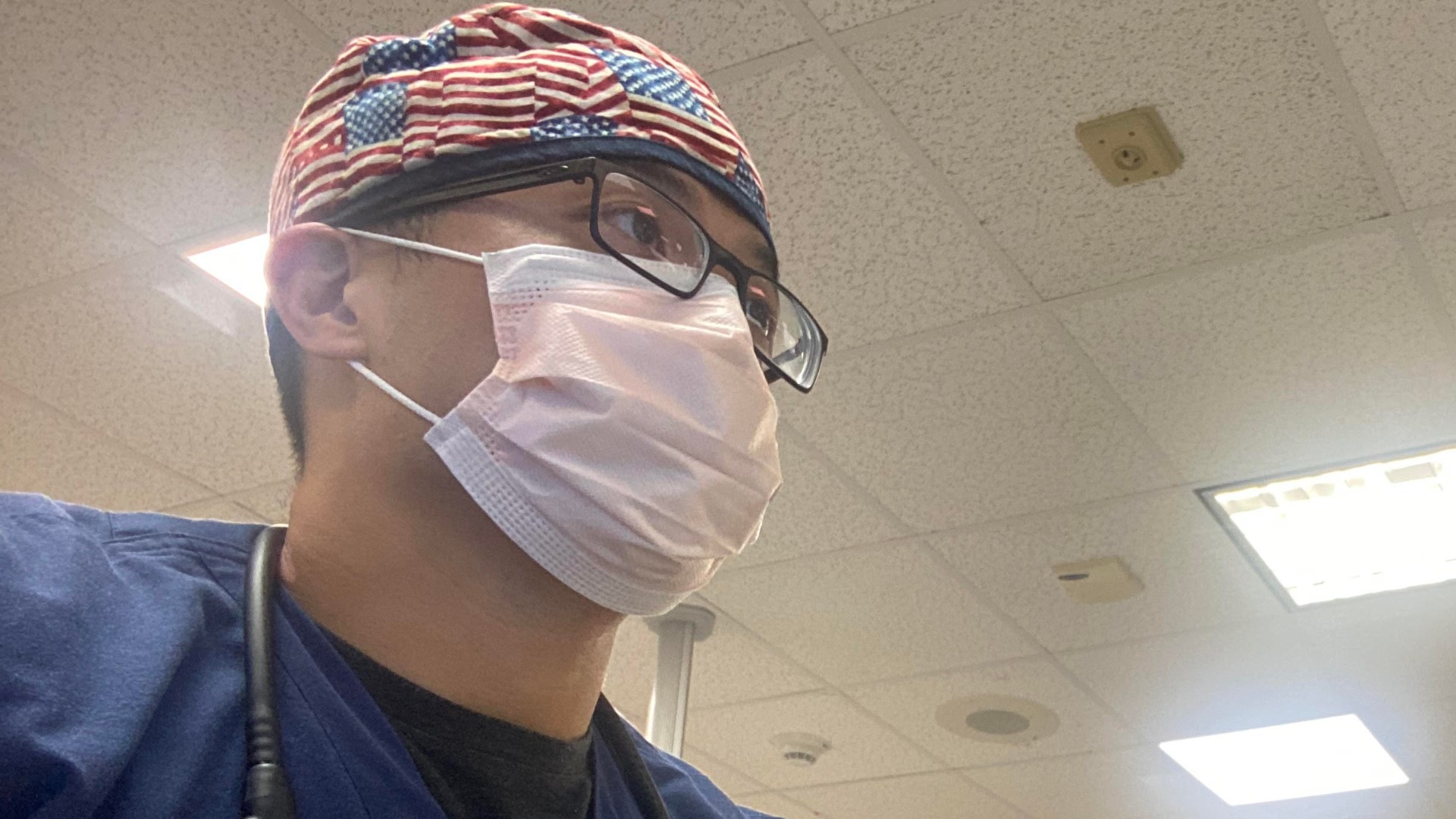INDIANAPOLIS — Dr. Mark Liao has always felt an inner calling to help and serve others.
“I just feel very lucky I have the opportunity to serve in both the medical capacity but also for the United States Army,” said Dr. Liao, who is the medical director of Indianapolis EMS; an emergency physician at IU Health and a captain with the Indiana Army National Guard.
Last fall, Dr. Liao said he was in Kuwait as part of a nine-month deployment as a flight surgeon. It was 9/11 that impacted his decision to enlist.
“In 2001, I was still in high school and the impact of 9/11 as a young person really impacted my decision and my brother’s decision to end up joining the National Guard. Being at that age, we felt so helpless and we wanted to do something,” Dr. Liao said.


Dr. Liao enjoys the comradery and teamwork that is engrained in the military. It’s also the very thing he loves about working with Indianapolis EMS.
“Right now, I do a lot with Indianapolis EMS, which is the ambulance service. I do medical direction. So we look at the quality of care that’s being provided, making sure we provide the best care we can. I’m also out on the streets a couple of hours to check on crews. I’ll also respond to 911 calls,” Dr. Liao said.
But his thirst for knowledge and passion for forming a deeper connection with patients is why he took on an additional career as an emergency physician.
“I loved EMS and paramedic stuff, but there was an even deeper layer to helping people and I could find out more about patients if I went into medicine. And that’s the route that I pursued," Dr. Liao said. "It’s always just trying to learn one thing after the other and I think that’s what keeps me going, learning more."
As an EMS and emergency physician, he’s on the front lines of the pandemic and he said the cases right now are dramatically going up.
Dr. Liao said hospitals are bracing for a strain on resources this winter, which is when flu season typically peaks. The flu already puts a strain on the health care system and COVID-19 is spread easier than the flu.
He said he remembers that the first known Indianapolis EMS COVID-19 transport was March 15. The first known COVID-19 case in the state was able to transport themselves.


But one of the patien’s he distinctly remembers was young and healthy-looking, around 35 years old. Young people who are healthy without pre-existing conditions aren’t immune to COVID-19.
“Her oxygen level was about 78 percent. The normal level should be 98-100. And she’s sitting there and looks pretty comfortable, but her oxygen was dangerously low. And you take an x-ray and her lungs just look terrible. And that was the thing that was pretty scary, was seeing that silent hypoxia. People if they stood still, they looked comfortable, but actually the virus is causing a significant amount of damage,” Dr. Liao said.
Dr. Liao said what kept the damaging impact of COVID-19 hidden to the eye was people who are young and healthy can compensate pretty well in the initial part of the illness.
“And then day six to eight is when we see the worst symptoms,” he added.
Although our knowledge of the virus that causes COVID-19 and the disease itself has grown tremendously since the spring, there is still so much we don’t know about COVID-19 or SARS-CoV-2.
“The long-term effects of COVID are unknown at this time, and this is a number we haven’t captured well, is how many people are living with consequences of COVID-19,” Dr. Liao said. “Having pulmonary function not return, fatigue, loss of taste and smell hasn’t returned yet.”
Dr. Liao said he stopped going to gyms in March and stopped going to restaurants two weeks ago because he would never want to be a carrier.
“The risk of me getting it is higher as a health care worker,” Dr. Liao said.
Health care workers make up six percent of COVID-19 hospitalizations across the country.
“We’ve had peers get very sick; we’ve had some of our paramedics get very sick. Thankfully, no one has passed, which I’m very, very thankful for, but the risk is there,” Dr. Liao said.
He said his parents and grandparents often worry about him. Due to the border closure between the U.S. and Canada and the 14-day quarantine restriction overseas, he doesn’t know when he’ll see them again.
“My grandmother lives in Canada. My parents live in Hong Kong. I don’t think there is any foreseeable chance I’ll be seeing them anytime soon,” Dr. Liao said.
But technology helps even with his 88-year-old grandmother, who he was surprised to learn could use FaceTime.
Dr. Liao and his brother, who is an urgent care doctor in California, continue to assure their family that they have the armor they need to stay safe on the frontlines.


But Dr. Liao said it’s not just the risk of getting sick or the risk of being a carrier that are concerns. The biggest concern he has is about the capacity of the entire health care industry to care for people.
“If we have a large amount of absentees from COVID-19, it would impact the entire city, with 911 services, like we wouldn’t have people to staff ambulances and take care of just the regular emergencies around the city,” Dr. Liao said. “The thing that makes us nervous is if we have a health care worker who tests positive, we take them out for 14 days, and that’s one less frontline worker, and that could have been the difference of someone getting an ambulance in time if they were choking.”
Dr. Liao said he credits the stay-at-home policy with bringing the number of cases down in the summer after the initial peak in the spring.
“I’m not sure we’ll be able to repeat the social distance and stay-at-home, but that gave us time to build capacity and figure out what we were going to do,” Dr. Liao said. "Now as we enter winter, the concern becomes (what) we’re going to start seeing.”
Dr. Liao also mentioned his concern for people with conditions other than COVID-19.
“During the pandemic (peak in the spring) we saw a dramatic drop in these cases coming into the hospital and actually seeing an increase of cardiac arrest at home. It made us worried that people were so afraid of going to the hospital that they were afraid to get it checked out,” Dr. Liao said. “That got better, but I’m afraid as we head into December, people aren’t going to get their baseline check and that the quality care they need to prevent that (conditions like cardiac arrest) from happening."
Dr. Liao said that throughout this pandemic, the hardest day for him wasn’t directly linked to the pandemic.
"In the past year, we had a police officer (Breann Leath) who was killed in the line of duty. That was probably the darkest day I had this year. You just feel the weight of the police department, EMS and fire department. We were just so worried that we wouldn’t be able to honor her because of the pandemic,” Dr. Liao said. He said he was happy to see that the city found a beautiful way to honor the first responder.
For Dr. Liao, his passion for medicine is rooted in doing whatever he can to help others.
“No matter where you go in the world, there are going to be people in need of medical attention and I always found it was a great thing to do is to be able to help others,” Dr. Liao said.
WTHR interviewed Dr. Mark Liao via Zoom in a joint call with IU Health Public Relations.

